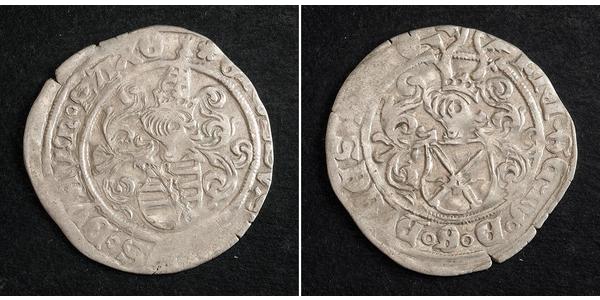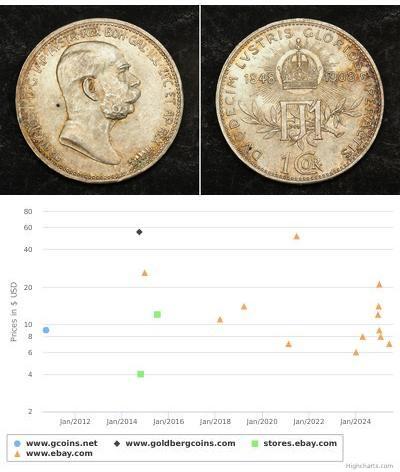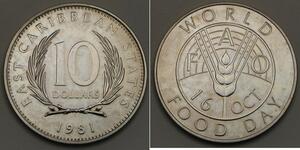(售价 $38.0)
1507, Saxony (Ernestine), Frederick III, John & George. Silver Groschen Coin. R!
Condition: XF-AU! Mint Place: Annaberg Mint Period: 1501-1507 State: Saxony (Ernestine Line) Reference: Keilitz 34, MB#54. R! Denomination: Groschen (Zinsgroschen) Ruler: Frederick III "the Wise", John & George (1501-1507) Diameter: 26mm Weight: 1.44gm Material: Silver
Obverse: Shield with arms of Saxony, topped by tournament helmet. Legend: * GROSSVS ° NOVVS ° DVCVM ° SAXO
Reverse: Shield with arms of Thuringia, topped by tournament helmet. Legend: FRI ° GE ° ° IO ° D ° G ° DUCES ° SAXO
em>.
Frederick III of Saxony (17 January 1463 – 5 May 1525), also known as Frederick the Wise (German "Friedrich der Weise"), was Elector of Saxony (from the House of Wettin) from 1486 to his death. Frederick was the son of Ernest, Elector of Saxony and his wife Elisabeth, daughter of Albert III, Duke of Bavaria. He is notable as being one of the most powerful early defenders of Martin Luther,[1] Lutheranism and the Protestant Reformation although he had little personal contact with Luther himself. He is considered to have remained a Roman Catholic all his life, yet gradually inclining toward doctrines of the Reformation.
Frederick III is commemorated as a Christian ruler in the Calendar of Saints of the Lutheran Church - Missouri Synod on 5 May. His court painter since 1504 was Lucas Cranach the Elder.
Born in Torgau, he succeeded his father as elector in 1486; in 1502, he founded the University of Wittenberg, where Martin Luther and Philipp Melanchthon taught.
Frederick was among the princes who pressed the need of reform upon Holy Roman Emperor Maximilian I, and in 1500 he became president of the newly formed council of regency (Reichsregiment).
Frederick was Pope Leo X's candidate for Holy Roman Emperor in 1519—the pope had awarded him the Golden Rose of virtue on 3 September 1518—but he helped secure the election of Charles V. Frederick ensured Luther would be heard before the Diet of Worms in 1521 and subsequently secured an exemption from the Edict of Worms for Saxony.
Frederick's collected many alleged relics in his castle church; his inventory of 1518's listed 17,443, including a thumb from St. Anne, a twig from Moses' burning bush, hay of the holy manger, and milk from the Virgin Mary. Money was paid in order to venerate these relics and thus escape years in purgatory. A diligent and pious person who rendered appropriate devotion to each of these relics could merit 1,902,202 years worth of penance (an earthly equivalent of time otherwise spent in Purgatory, removed by indulgences). Two years later, the collection exceeded 19,000 pieces.
He protected Martin Luther from the Pope's enforcement of the edict by faking a highway attack on Luther's way back to Wittenberg, abducting and then hiding him at Wartburg Castle following the Diet of Worms.
Frederick died unmarried at Lochau, a hunting castle near Annaburg (30 km southeast of Wittenberg), in 1525 and was buried in the Schlosskirche at Wittenberg with a grave by Peter Vischer the Younger. He was succeeded by his brother Duke John the Steadfast as Elector of Saxony.
其中一个是























